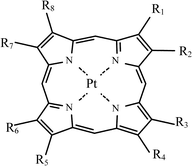Phosphorescent oxygen-sensitive materials for biological applications†
Abstract
A number of macromolecular probes employing different carriers and a number of microparticular probes employing different oxygen sensitive

- This article is part of the themed collection: Fluorescent sensors

 Please wait while we load your content...
Please wait while we load your content...